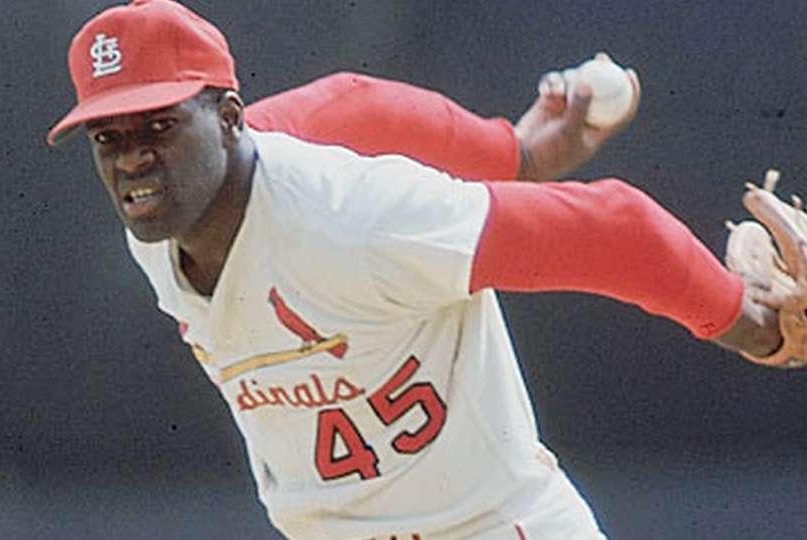Bob and Whitey

As we celebrate Yankee Elimination Day — saving us from the ALCS from the fiery depths of hell is the second-best thing the state of Florida can do for us this year — we should mourn a couple of giants. First, Bob Gibson, and the fact that one of the five best managers in MLB history was in total awe of him decades after his retirement says it all:
In 2006, less than an hour after Tony La Russa had won his first World Series as the manager of the St. Louis Cardinals, he was greeted in the hallway at Busch Stadium by an iconic figure.
“Bob Gibson just shook my hand,” said La Russa, who had won a World Series with Oakland, and won nearly 2,500 games by that time, yet he was glowing, in awe of what had just happened. “I just got welcomed to the club by Bob Gibson.”
That’s the reverence paid to Bob Gibson, not just in St. Louis, but across major league baseball: Something, or someone, becomes official when endorsed by Bob Gibson. He was one of the greatest pitchers of all time, he was arguably the greatest athlete ever to pitch in the big leagues, and when it came to competing, no one was more ferocious than Gibson.
AS with his contemporary Sandy Koufax it took Gibson a little while to get going, but when he hit his stride he was nearly unhittable, and famously was a brilliant World Series performer (7-2, 1.89 ERA, 17/92 BB/K, 2 homers as a hitter.)
Earlier this week, the best starting pitcher in the history of North American sports’s greatest franchise also passed away:
Exactly 60 years before he died on Thursday night at age 91, Whitey Ford pitched a shutout in the World Series. It was the start of a scoreless streak that stretched 33⅔ innings, topping Babe Ruth for the longest in World Series history.
Yet Ford never believed he should have been pitching on Oct. 8, 1960, in Game 3 at Yankee Stadium against the Pittsburgh Pirates. At the time, Ford was a six-time All-Star on his way to becoming the team’s career leader in victories, with 236. He was the Yankees’ ace, and aces were supposed to start Games 1, 4 and 7.
Casey Stengel, who had managed Ford for a decade, had other plans. For the opener at the Pirates’ cozy Forbes Field, Stengel started Art Ditmar, a right-hander who had a strong season but who had never started in the World Series. Stengel wanted to save the left-handed Ford for the first game in Yankee Stadium, with its cavernous left-center field.
Ford would thrive in both locations, following up his Game 3 shutout in the Bronx with one in Pittsburgh while facing elimination in Game 6. But the latter effort left him unavailable for Game 7, when the Pirates scored off five Yankees pitchers in a 10-9 triumph. It was the last game Stengel ever managed for the Yankees, and he never lived down his decision.
“Whitey’s like Bob Gibson,” said Bobby Richardson, the Yankees’ second baseman at the time, by phone a few days ago, just after Gibson had died. “They were different pitchers, of course, but both of them were captains of the team, so to speak. They’re the ones you pitched against the tough opponents.
“Stengel’s excuse was it’s a small ballpark in Pittsburgh. But Whitey pitched his two shutouts, and had he been able to go three, I’m sure it would have been a different ballgame.”
Superficially, Ford looks like only a marginal Hall of Famer, but he was better than that. As Bill James documented in his book about managers, when Stengel was engaged in the impenetrable but brilliant web of complex platooning that helped produce the most dominant team in MLB history, Ford was generally reserved as much as possible for top-level competition. His WAR in his peak year underestimates him because he was throwing fewer but more high-leverage innings against tougher competition than other starters. When Stengel finally got old and started disappearing up his own ass by tossing around racial slurs and somehow only starting his rested ace twice in a seven-game World Series and got fired, Ralph Houk put Whitey on a regular rotation and he went on a great run starting at 32, throwing between 245-283 innings a year and going 83-25.
R.I.P to both.


